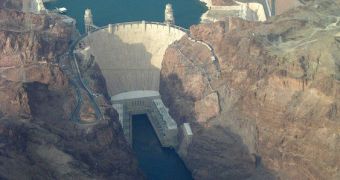Bridges, nuclear power plants, dams and other strategically-important buildings could be “cloaked” against the seismic waves earthquakes produce. This could be achieved by using innovative metamaterials, constructs that do not exist in nature, and which can easily steer seismic waves.
In other words, these materials would be able to distort the path of seismic waves similarly to how they can affect the path of light in invisibility cloaks. Metamaterials have a host of practical applications that would have seemed science-fiction just a couple of years ago.
As the disaster that occurred at the Fukushima Daiichi nuclear power showed last year, high-risk facilities can in fact be at much greater risk than experts plan for. The Japanese installation was hit by an earthquake and a tsunami on March 11, 2010, and lost all power to its cooling system.
Even though multiple safeguards were set in place, they were affected in a succession that overcame all redundancies. But some of the issues may have been avoided if the original tremor had caused less damage. This is precisely the type of scenarios that a new generation of metamaterials could avoid.
Experts propose that these materials could be used to envelop entire buildings, or at least their foundations, in a protective layer capable of handling seismic waves. The latter are ripples produced by rearranging tectonic plates, and they travel through Earth's crust and mantle at high speeds.
Under normal conditions, they travel in a straight line. By applying metamaterials to the foundation of buildings, these paths would be modified so that the spot the structure occupies could not be affected.
Granted, the downside to all of this is that the effects of earthquakes would be more intense in the areas between buildings that have such advanced foundations, since this is where all the seismic waves will be routed through, Technology Review reports.
Another potential approach would be to use metamaterials that can turn seismic waves into evanescent waves, a type of ripple that is prone to losing intensity and strength as it travels.
A recent study revealed that protecting vitally-important buildings would require the creation of a defensive perimeter about 60 meters (197 feet) across, in a circle around the foundations of the target structure.
This means that it would be impossible to shield buildings in an entire city, since the protection zones would overlap, and the protective effect would disappear. But this doesn't mean the important infrastructure – generally located in isolated, remote areas – could not be protected.

 14 DAY TRIAL //
14 DAY TRIAL //